
© 2024 CYI. All rights reserved

The Nicosia International Airport
The Nicosia International Airport (IATA: NIC, ICAO: LCNC) began service as Royal Air Force Station, Nicosia, and saw heavy use during the Second World War. It opened as a commercial airport two years after the end of the War, in 1947, but the area surrounding the airport itself remained the location for the Air Station. After Cyprus gained independence in 1960, the airport and its surrounding area were transferred to the Cyprus Government. The RAF continued to occupy part of the site, known as the RAF Nicosia Retained Site: this British “retained site” status gave the United Kingdom the right to exercise exclusive control over the designated area in an emergency. In addition, three former RAF camps close to the airport shared facilities with UNFICYP after the Force’s establishment in March 1964.The airport facilities were expanded with a new terminal building in 1968, German-designed and Cypriot-built. It was hailed for the stylish modernity of its design. It was elegant and uncluttered with shafts of sunlight streaming through large circular wells in the ceiling. The runways served both military and civilian aircraft, and by July 1974, Nicosia International Airport was welcoming a strong tourism trade.
With increasing numbers of holidaymakers flying in to Nicosia airport on Cyprus Airways and other carriers, plans were announced in June 1974 to expand the terminal and platform again. On 15 July 1974, Greek National Guard officers staged a military coup d’état. For the next four days, the airport was kept busy with commercial flights arriving to evacuate civilians which were primarily tourists. On 20 July, Turkish forces, responding to the Greek coup, launched a series of air raids on the airport. On 23 July, fighting between Turkish and Greek forces was especially fierce in the airport vicinity. The Force Commander at that time, General Prem Chand from India, ordered UNFICYP to take over the airport, declaring it a United Nations Protected Area (UNPA). United Nations Headquarters in New York gave its immediate approval, and, with the agreement of the local military commanders of both sides, UNFICYP troops (from Canada, Finland, Sweden and the United Kingdom) occupied the airport This required both sides to withdraw at least 500 meters from the perimeter of the airport. With the ceasefire signed on 16 August 1974 Nicosia Airport became part of the United Nations controlled Buffer Zone separating the two communities on the island, and it has been inoperable as a fully functioning airport ever since.
Time and weather have led to some structural deterioration to the terminal building and to the Cyprus Airways Trident Sunjet passenger plane resting beside it: the plane’s engines were stripped during the crisis in 1974, and used to repair another Cyprus Airways airplane to enable the latter plane to fly out. The last commercial airline flights out of Nicosia Airport took place in 1977 under UN Special authorization, when three of the remaining Cyprus Airways aircraft left on the tarmac since the 1974 events were retrieved by British Airways engineers and flown to London.
During the mid-nineties the re-opening Nicosia airport featured prominently in various UN-facilitated initiatives over the decades. The aim was to establish Confidence-Building Measures (CBMs) between the island’s two communities. An agreement appeared to be close in 1994 foreseeing the reopening of the airport with access free between the airport and both sides. The United Nations agreed that the airport could be reopened for civilian and cargo traffic, under UN administration, in cooperation with the Council of the International Civil Aviation Organization (ICAO), until the Cyprus problem was settled. Traffic rights would be limited to foreign airlines, including those registered in Turkey. There would be free access from both sides and foreign visitors entering Nicosia airport would be able to travel between the two sides.
The cost for the restoration of the Nicosia International Airport operational and of its administration, operation and security, would have been borne locally in an agreed manner. Local sources of revenue would have included taxation, customs duties on imports at points of entry to the fenced area and at Nicosia International Airport and concession fees at Nicosia International Airport.
However, as the process evolved, the fenced area of the city of Varosha nearby Famagusta (which was only a small part of the whole city and comprised some four kilometers north-south and about one-and-a-half kilometer east-west) and the Nicosia airport again emerged as key obstacles for a tentative agreement. Despite a last-ditch effort in October 1994 to retain the momentum around the CBMs, other issues had clearly intruded on the negotiating process, which was supposed to have been based on a minimalist document containing a set of specific measures. Collapse of the CBMs had broad ramifications for peacemaking in Cyprus.
An abandoned airport in Cyprus has been frozen in time for half a century. It's filled with rusting airplanes and peeling paint — take a look.
- Nicosia International Airport was abandoned in 1974 due to conflict in Cyprus.
- It was once the Mediterranean island's main airport, but it's been untouched for almost 50 years.
- Nature has overtaken the airport's baggage claim, tarmac, and terminals.

A decaying Cyprus Airways Trident 2E aircraft sits on the tarmac of Nicosia International Airport on the Mediterranean island of Cyprus.
But that's not where the ruins end. Decay continues inside the airport, which once served as the welcoming point for visitors to Cyprus.
An empty baggage claim fills one wing. In another area, travel posters unfurl from the wall.
Today, the abandoned airport serves as a reminder of Cyprus' tumultuous past.
For a tiny island, Cyprus — located in the Mediterranean to the south of Turkey and west of Lebanon and Syria — has been riddled with conflict.
In the European island's capital, Nicosia International Airport was at the heart of a major conflict between Greek and Turkish-Cypriots in 1974.
The airport, which was originally built in the 1930s as a military airfield, slowly grew to be a hub for travelers in Cyprus, as Atlas Obscura reported.
Source: Atlas Obscura
But in 1974, Greek nationalists staged a military coup against the Cypriot government. In response, Turkey invaded Cyprus from the north, Slate reported.
Source: Slate
Nicosia International Airport became a battleground and in 1974, the United Nations established a buffer zone dividing the island, Slate reported.
In the center of that zone was the Nicosia airport. The buffer zone is still visible on a map today.
With the creation of the demilitarized zone came the "immediate closure and sudden abandonment" of the airport, Atlas Obscura reported.
Today, Cyprus is split in two. The north — or the Turkish Republic of Northern Cyprus as it's recognized by Turkey — is under Turkish-Cypriot rule. And the south — recognized internationally as Cyprus — is under Greek-Cypriot rule.
And for the last 50 years, the airport has remained abandoned in what is still a demilitarized zone.
For decades, photographers and urban explorers have explored the site.
Their photos depict an airport that, for close to half a century, has only been touched by nature's elements.
Baggage carousels have been destroyed by the elements. The airport's halls have peeling paint on the ceilings and vines growing on the floors.
In other areas of the airport, dust and dirt cover crumbling chairs.
But in 2022, the public could tour the airport — virtually. A team of researchers with The Cyprus Institute documented and digitized the abandoned airport. The result was a virtual walkthrough of the crumbling site that anyone can explore, as the Cyprus Mail reported.
Source: The Cyprus Institute , Cyprus Mail
They, too, can now see inside an airport that has spent close to 50 years slowly decaying.
- Main content
- North America
- South America
Nicosia International Airport – An Abandoned Airport In A Divided City

Nicosia International Airport was the main airport on the island of Cyprus up until the war in 1974. A coup supported by Greece led Turkey to invade the north of the island to protect the Turkish minority living there and protect democracy. Since then, the island has been divided and all efforts to reunite the divided community have failed. Many of the buildings in the UN Buffer Zone between the two sides were abandoned and have been decaying since the war. Talks continue to try bring the two communities in Cyprus together but even over 40 years later, they remain divided and suspicious of each other.
The airport in the Cypriot capital of Nicosia was built in the 1930s as RAF Nicosia as the island was under British control at the time. At first, it acted mainly as a military airport and is still owned by the British Ministry of Defence. The runway was constructed in 1939 by the Shell Company and Pierides & Michaelides Ltd. Some civilian traffic served British interests in the region up until the outbreak of World War II. During the war, the facilities were expanded and both British and American bombers used the facility.

The first passenger terminal was built after the war in 1949. Regular services were operated by Misrair, BOAC, Cyprus Airways and MEA to destinations in Europe , North Africa and the Middle East. The terminal and aprons were extended in 1959 as passenger traffic to the island grew. Cyprus gained its independence from the UK in 1960.
In 1968, the RAF withdrew their operations, leaving RAF Nicosia to become solely Nicosia International Airport. A new terminal designed by the West German company Dorsch und Gehrmann opened in 1968. The British contributed nearly half of the cost of the new terminal. The old building remained in use as a base for The Nicosia Flying Club and other such organisations.

Plans were put in place to expand the apron to accommodate more aircraft, including widebody jets however this was never to occur. A coup on 15 July 1974 ousted the president of Cyprus, Archbishop Makarios. The right wing Greek nationalists leading the coup ceased Nicosia International Airport and closed it for a number of days. When they reopened it on July 18th, there was chaos as stranded holiday makers and foreign nationals tried to escape from Cyprus. On July 20th, Turkey invaded the island to protect the Turkish Cypriot population and caused extensive damage to the runway.

A ceasefire was negotiated between the two sides in August 1974 and Nicosia International Airport became part of the UN Buffer Zone which divided the southern Greek Cyprus from the Northern Turkish Cyprus. It remains in the UN Buffer Zone to this day and acts as an administrative base for the UN in Cyprus, UNFICYP. Access to the Buffer Zone is limited for peoples from both sides with a lot of what lay in the strip of land dividing the island left as it was in 1974. Nicosia International Airport is one such place. The legendary ghost town of Varosha has also remained abandoned and closed off from the public since the 1974 invasion.

A Turkish Cypriot proposal to reopen the airport under joint control in 1975 was rejected by Archbishop Makarios. In 1977, three Cyprus Airways aircraft were flown out by British Airways engineers after being abandoned there since the invasion. No other commercial aircraft have taken off or landed at the airport since.

The lack of public access to Nicosia Airport means that international airports are now located in Paphos and Larnaca catering both for the Cypriot population and large number of tourists who visit the island annually. Ercan International Airport also serves the population on the northern part of the island but is in territory that forms part of the Turkish Republic of Northern Cyprus and as such is not recognised by the international community. Flights from the North of the island are only to permitted to Turkey and often connect via airports there to other destinations.
It has been suggested that the airport may be reopened as part of the reunification negotiations however, so far there has been little progress in that regard. With three airports capable of handling international traffic, it is likely that any reunification agreement between the Greek Cypriot and Turkish Cypriot communities will instead make use of Paphos, Larnaca and Ercan, leaving Nicosia International Airport
9 thoughts on “Nicosia International Airport – An Abandoned Airport In A Divided City”
Is there a piece of ceramic art work still there?
No, it has been restored and “temporarily” (i.e. until NIC reopens) moved to Larnaca International Airport.
Pingback: New research targets sufferers of social anxiety disorder | KoolKill
Pingback: Atlas of the world's unusual borders | NEAEA
Late 80’s on U.N. Team, at end of Airport was the Shell of a B25 Mitchell Bomber. As it was called and painted – The Freedom Bird. Not sure if it’s still located there??
Amazing that the lights still seem to be on.
Steve – I think those “lights” are actually light tubes – where a glass dome on the roof of the building feeds daylight down a tube to a “lens” inside the building.
They can't be flown due to damage. There may be an issue with ownership too. One would imagine that they'll be dismantled when the Cyprus issue is resolved and the airport is handed back to the unified government should that happen
The planes are still there they should move them
Leave a Reply Cancel reply
Your email address will not be published. Required fields are marked *
Frozen In Time: The Cyprus Buffer Zone
- Alan Taylor
- April 10, 2014
This year marks four decades since the Cyprus National Guard staged a coup that led to Turkish military intervention and escalated the civil war between the Greek and Turkish communities on the island. After the ceasefire, a heavily restricted buffer zone, controlled by the United Nations, was established between the north and south. It stretches 180 km (112 mi) across the whole island measuring 7.4 km (4.6 mi) at its widest and 3.3 m (11 ft) at its narrowest point. The demilitarized zone is restricted to the general public and no Greek or Turkish Cypriots are allowed inside. Reuters photographer Neil Hall recently visited the buffer zone, which still contains crumbling relics of times gone by - abandoned houses, businesses, and even an airport - crumbling snapshots of Cyprus in 1974.
- Email/span>

The abandoned Nicosia International Airport near Nicosia, Cyprus, on March 10, 2014. For 40 years now, a buffer zone - a no-man's land controlled by the United Nations - has split Cyprus from east to west, with Cyprus's ethnic Greeks living in the south, and its Turks in the north. The buffer zone still contains crumbling relics of times gone by - abandoned houses, businesses and even an airport. In 1960, a power-sharing government crumbled soon after independence from Britain, and the island has been divided since a Greek Cypriot coup was followed by a Turkish invasion of the north in 1974. #

A Cyprus Airways passenger jet stands in the abandoned Nicosia International Airport near Nicosia, on March 10, 2014. #

Windows of an abandoned Cyprus Airways passenger jet in the empty Nicosia International Airport on March 10, 2014. #

A cafe sign in the abandoned Nicosia International Airport, on March 10, 2014. #

Deteriorating billboards line the walls of the abandoned Nicosia International Airport on March 10, 2014. #

Nicosia International Airport's passenger departure area, photographed on March 10, 2014. #

A pigeon flies past a crumbling billboard at the abandoned Nicosia International Airport on March 10, 2014. #

Decorations on a wall of the Nicosia International Airport, on March 10, 2014. #

A watchtower stands along the United Nations buffer zone in the district of Famagusta, northern Cyprus, on March 14, 2014. #

A street lies abandoned in the UN buffer zone in central Nicosia on March 12, 2014. #

A sign marks the boundary of the United Nations buffer zone in the village of Pyla, Cyprus, on March 11, 2014. Pyla is one of a few villages in the UN buffer zone, and it is home to a mixed community of both Greek and Turkish Cypriots. #

The kitchen of an abandoned cafe inside the UN buffer zone in central Nicosia on March 12, 2014. #

Old televisions found and collected by soldiers in an abandoned commercial area in the UN buffer zone in central Nicosia on March 12, 2014. #

A former commercial street inside the UN buffer zone in central Nicosia on March 12, 2014. #

Objects found and collected by soldiers in an abandoned commercial area in the UN buffer zone in central Nicosia on March 12, 2014. #

Bottles on a table in an abandoned cafe inside the UN buffer zone in central Nicosia on March 12, 2014. #

An abandoned house with bullet-holes, defensive sand bags and firing positions, seen behind barbed wire inside the UN buffer zone in central Nicosia on March 12, 2014. #

Cars sit abandoned in a former shopping center inside the UN buffer zone in central Nicosia on March 12, 2014. The cars were imported from Japan to be sold at a Toyota dealership. They were stored here during the 1974 conflict and have not been moved since. #

An import sticker on the window of a car left in the UN buffer zone in Nicosia on March 12, 2014. #

Cars from 1974 sit abandoned in an underground garage in UN buffer zone in Nicosia on March 12, 2014. Some of the cars, idle for four decades, have only 32 miles (52 km) on the odometer. #

A warning sign on a wall marking the boundary of the UN buffer zone in the Turkish Cypriot area of central Nicosia on March 13, 2014. #

People sit next to a wall blocking access to the UN buffer zone in the Greek Cypriot-controlled area of central Nicosia on March 14, 2014. #

An illuminated flag of the self-declared Turkish Republic of Northern Cyprus, which is recognized only by Turkey, overlooks Nicosia on March 12, 2014. #

Travelers pass through passport control to enter northern Cyprus in central Nicosia on March 13, 2014. Across the island of Cyprus there are six border crossings allowing movement between the north and the south of the island. There are passport controls on the borders, although the Turkish Republic of Northern Cyprus is not officially recognized by the UN Security Council. People cross the borders for both work and leisure and both Greek Cypriots and Turkish Cypriots can move freely. #

A man fishes in the sea next to a sign marking the limit of the UN buffer zone in the Famagusta District of Cyprus on March 11, 2014. #

A cat sits on barrels that block entry into a street which now falls within the UN buffer zone in central Nicosia on March 12, 2014. #

A view of the divided city of Nicosia, encompassing both Turkish and Greek Cypriot-controlled areas and the UN buffer zone, photographed on March 12, 2014. #

Children play in a park next to a fence marking the UN buffer zone in a partially restricted area in the Turkish Cypriot controlled area of central Nicosia on March 15, 2014. #
We want to hear what you think about this article. Submit a letter to the editor or write to [email protected].
Most Recent
- May 8, 2024
Photos: Deadly Flooding in Southern Brazil
Images of widespread flooding in the state of Rio Grande do Sul
- May 6, 2024
A Traditional Easter Rocket War in Greece
Images of a friendly, traditional “war” between two churches, where members of each church launch rockets at the other.
- May 4, 2024
When the National Guard Arrived at Kent State, Images From 1970
Photographs from a pivotal day in American history
- May 3, 2024
Photos of the Week: May Day, Campus Protests, Snake Festival
Devastating floods across Kenya, a pagan fire festival in Scotland, antler gathering in Wyoming, pro-Palestinian demonstrations at many American colleges, and much more
Most Popular on The Atlantic
- Trump Flaunts His Corruption
- It’s Not a Rap Beef. It’s a Cultural Reckoning.
- No One Knows What Universities Are For
- Did Something Happen to Our Necks?
- Listen to What They’re Chanting
- Who Really Has Brain Worms?
- Ozempic or Bust
- The New Propaganda War
- What You Need to Know About Making a Good Impression
- The Great Honeybee Fallacy
Update April 12, 2024
Information for u.s. citizens in the middle east.
- Travel Advisories |
- Contact Us |
- MyTravelGov |
Find U.S. Embassies & Consulates
Travel.state.gov, congressional liaison, special issuance agency, u.s. passports, international travel, intercountry adoption, international parental child abduction, records and authentications, popular links, travel advisories, mytravelgov, stay connected, legal resources, legal information, info for u.s. law enforcement, replace or certify documents.
Before You Go
Learn About Your Destination
While Abroad
Emergencies
Share this page:
Travel Advisory July 26, 2023
Cyprus - level 1: exercise normal precautions.
Reissued with obsolete COVID-19 page links removed.
Exercise normal precautions in Cyprus. Some areas have increased risk. Read the entire Travel Advisory.
Country Summary: Do not attempt to enter the United Nations buffer zone at any place other than a designated crossing point. Police and UN forces strictly enforce this restriction.
Read the country information page for additional information on travel to Cyprus.
If you decide to travel to Cyprus:
- Enroll in the Smart Traveler Enrollment Program ( STEP ) to receive security messages and make it easier to locate you in an emergency.
- Follow the Department of State on Facebook and Twitter .
- Review the Country Security Report for Cyprus.
- Visit the CDC page for the latest Travel Health Information Travel Health Information related to your travel.
- Prepare a contingency plan for emergency situations. Review the Traveler’s Checklist .
UN Buffer Zone: Since 1974, the southern part of Cyprus has been under the control of the government of the Republic of Cyprus. The northern part of Cyprus, administered by Turkish Cypriots, proclaimed itself the “Turkish Republic of Northern Cyprus” (“TRNC”) in 1983. The United States does not recognize the “TRNC,” nor does any country other than Turkey. A buffer zone patrolled by the UN Peacekeeping Force in Cyprus, separates the two sides. For U.S. citizen travelers:
- Enter and exit the Republic of Cyprus ONLY at Larnaca and Paphos airports and at the seaports of Limassol, Larnaca, and Paphos. The Republic of Cyprus does not consider entry at Ercan Airport in the north to be a “legal” entrance into Cyprus.
- You cannot receive a residency permit from the Republic of Cyprus to reside in the area north of the UN buffer zone.
Embassy Messages
View Alerts and Messages Archive
Quick Facts
Six months remaining validity recommended
Two pages for entry stamp
Not required for stays under 90 days
Embassies and Consulates
U.s. embassy nicosia.
Metochiou & Ploutarchou Street 2407, Engomi Nicosia, Cyprus Telephone: +(357) 22-393939 Emergency After-Hours Telephone: +(357) 22-393939; wait for the recorded message then dial 0 Fax: +(357) 22-266640 Email: [email protected]
Destination Description
Learn about the U.S. relationship to countries around the world.
Entry, Exit and Visa Requirements
Visit the Embassy of the Republic of Cyprus website for the most current visa information.
Traveling Through Europe: The republic of Cyprus is a member of the European Union but is not a party to the Schengen Agreement. However, if you are planning to visit or travel through European countries, you should be familiar with the requirements of the Schengen Agreement.
- Your passport should be valid for at least three months beyond the period of stay if you plan on transiting a Schengen country. Review our U.S. Travelers in Europe page .
- You will need s ufficient proof of funds and a return plane ticket .
- You may enter the Republic of Cyprus for up to 90 days for tourism or business purposes without a visa . For stays longer than 90 days, you will need a temporary residency visa.
Since 1974, the southern part of Cyprus has been under the control of the government of the Republic of Cyprus. The northern part of Cyprus, administered by Turkish Cypriots, proclaimed itself the “Turkish Republic of Northern Cyprus” (“TRNC”) in 1983. The United States does not recognize the “TRNC,” nor does any country other than Turkey. A buffer zone patrolled by the UN Peacekeeping Force in Cyprus separates the two sides. For U.S. citizen travelers:
- Enter and exit the Republic of Cyprus ONLY at Larnaca and Paphos airports and at the seaports of Limassol, Larnaca, and Paphos. The Republic of Cyprus does not consider entry at Ercan Airport in the north to be a “legal” entrance into Cyprus.
- You cannot receive a residency permit from the Republic of Cyprus to reside in the area north of the UN buffer zone.
- You can cross the buffer zone and enter the Turkish Cypriot-administered area by showing a valid U.S. passport at one of the recognized checkpoints. You can stay in the Turkish Cypriot-administered area for less than 90 days. The Republic of Cyprus does not recognize residence permits issued by Turkish Cypriots. If you stay in the Turkish Cypriot-administered area for over 90 days, you may be detained by Republic of Cyprus immigration or police, or denied entry into the government-controlled part of the island.
Some HIV/AIDS entry restrictions exist for visitors to and foreign residents of the Republic of Cyprus. There are no restrictions for short-term tourist stays and no HIV testing on entry. Authorities will not grant a residence permit for work or study to a U.S. citizen who tests positive for HIV.
Find information on dual nationality , prevention of international child abduction , and customs regulations on our websites.
Safety and Security
U.N. Buffer Zone:
- Do not, under any circumstances, attempt to enter the United Nations buffer zone at any place other than a designated crossing point.
- Never photograph military installations or anything that could be perceived as being of a security interest. Pay particular attention to areas marked with “no photography” signs. Police on both sides of the island strictly enforce these restrictions .
Terrorism: Credible information indicates terrorist groups continue plotting possible near-term attacks in Europe. All European countries remain potentially vulnerable to attacks from transnational terrorist organizations. Terrorist groups, including their associates, and those inspired by such organizations, are intent on attacking U.S. citizens abroad. Terrorists are increasingly using less sophisticated methods of attack -- including edged weapons, pistols, and vehicles – to more effectively target crowds. Frequently, their aim is unprotected or vulnerable targets, such as:
- High-profile public events (sporting contests, political rallies, demonstrations, holiday events, celebratory gatherings, etc.)
- Hotels, clubs, and restaurants frequented by tourists
- Places of worship
- Shopping malls and markets
- Public transportation systems (including subways, buses, trains, and scheduled commercial flights)
For more information, see our Terrorism page.
Crime: Cyprus generally has low crime rates.
- Be alert and always aware of your surroundings and of your personal belongings. Criminals often target those who are distracted, alone in an isolated area, or impaired.
- Do not leave any valuables unattended or out in public view.
- Avoid so-called “night clubs” (topless bars), as they reportedly employ women trafficked to Cyprus for sexual exploitation. Night clubs have presented foreign patrons with grossly-inflated bar tabs, threatening customers who refuse to pay.
- Claims that make it appear you are helping a loved one or a friend who has been injured or is in trouble
- Online dating/social networking services
- Inheritance notices
- Work permits/job offers
- Bank overpayments
See the Department of State and the FBI pages for information on scams.
Victims of Crime:
U.S. citizen victims of sexual assault are encouraged to contact the U.S. Embassy for assistance.
Report crimes to the local police by dialing 112 and contact the U.S. Embassy by dialing 22-393939 . Remember that local authorities are responsible for investigating and prosecuting crimes.
See our webpage on help for U.S. victims of crime overseas .
- Help you find appropriate medical care
- Assist you in reporting a crime to the police
- Contact relatives or friends with your written consent
- Provide general information regarding the victim’s role during the local investigation and following its conclusion.
- Provide a list of local attorneys
- Provide our information on victim’s compensation programs in the United States
- Provide an emergency loan for repatriation to the United States and/or limited medical support in cases of destitution
- Help you find accommodation and arrange flights home.
- Replace a stolen or lost passport
For further information:
- Enroll in the Smart Traveler Enrollment Program ( STEP ) to receive security messages and make it easier to locate you in an emergency.
- Call us in Washington at 1-888-407-4747 toll-free in the United States and Canada or 1-202-501-4444 from other countries from 8:00 a.m. to 8:00 p.m. Eastern Standard Time, Monday through Friday (except U.S. federal holidays).
- See the State Department's travel website for the Worldwide Caution , Travel Advisories , and Alerts.
- Follow us on Twitter and Facebook .
- See traveling safely abroad for useful travel tips.
Tourism: The tourism industry is generally regulated and rules with regard to best practices and safety inspections are regularly enforced. Hazardous areas/activities are identified with appropriate signage and professional staff is typically on hand in support of organized activities. In the event of an injury, appropriate medical treatment is widely available throughout the country. Outside of a major metropolitan center, it may take more time for first responders and medical professionals to stabilize a patient and provide life-saving assistance. U.S. citizens are encouraged to purchase medical evacuation insurance .
Local Laws & Special Circumstances
Criminal Penalties: You are subject to local laws. If you violate local laws, even unknowingly, you may be expelled, arrested, or imprisoned. Individuals establishing a business or practicing a profession that requires additional permits or licensing should seek information from the competent local authorities, prior to practicing or operating a business. Possession of a U.S. passport will not prevent you from being detained, prosecuted, or imprisoned.
Furthermore, some crimes are also prosecutable in the United States, regardless of local law. For examples, see our website on crimes against minors abroad and the Department of Justice website.
Arrest Notification: If you are arrested or detained, ask police or prison officials to notify the U.S. Embassy immediately. See our webpage for further information.
Faith-Based Travelers: See our following webpages for details:
- Faith-Based Travel Information
- International Religious Freedom Report – see country reports
- Human Rights Report – see country reports
- Hajj Fact Sheet for Travelers
- Best Practices for Volunteering Abroad
Travel in the Area Administered by Turkish Cypriots:
- See Entry, Exit, and Visa Requirements above.
- The Embassy’s ability to provide assistance to you in this area is limited.
- Immigration officials at Larnaca Airport have occasionally turned around non-EU citizens who announce their intention to stay in hotels or villas determined by the Republic of Cyprus to be on land belonging to displaced Greek Cypriots. For more information on this issue and a full list of such properties, visit the webpage of the Embassy of the Republic of Cyprus in the United States.
- Car insurance purchased in the government-controlled area is not valid in the area administered by Turkish Cypriots. If you travel north of the UN buffer zone, you must have separate car insurance that can be purchased at the crossing points.
LGBTI Travelers: There are no legal restrictions on same-sex sexual relations or the organization of LGBTI events in the Republic of Cyprus or in the area administered by the Turkish Cypriots. Despite broad legal protections, LGBTI individuals sometimes face societal discrimination and few are open about their sexual orientation or gender identity. Although public attitudes tend to be socially conservative in Cyprus, the U.S. Embassy has not received reports of violence against LGBTI travelers.
See our LGBTI travel information page and section six of our Human Rights Report for further details.
Travelers Who Require Accessibility Assistance:
- The People with Disabilities Law mandates that public buildings and tourist facilities built after 1999 be accessible to all.
- Older buildings frequently lack access for persons with disabilities.
- Narrow or nonexistent sidewalks and lack of transport, parking spaces, accessible toilets, and elevators all pose problems for persons with disabilities.
- Republic of Cyprus law prohibits discrimination against persons with disabilities in employment, education, access to health care, or in the provision of other state services.
- For information on accessible travel in Cyprus, visit the Accessible Cyprus page of the Cyprus tourist office website.
Students: See our students abroad page and FBI travel tips .
Women Travelers: See our travel tips for women travelers .
We do not pay medical bills, and U.S. Medicare does not pay overseas claims.
Medical Insurance: Make sure your health insurance plan provides coverage overseas . Most care providers overseas only accept cash payments . See our webpage for more information on insurance coverage overseas.
We strongly recommend obtaining supplemental insurance for medical evacuation.
If traveling with prescription medication , check with the Republic of Cyprus to ensure the medication is legal in Cyprus. Always carry your prescription medication in original packaging with your doctor’s prescription. You should similarly confirm with authorities in the area administered by Turkish Cypriots to ensure any medication you are carrying will not present problems. The police there can be contacted at 00903922283411 and the “Drug and Pharmacy Office” at 00903922284156 or 00903922284001.
Be aware that the dry air on the island may aggravate respiratory ailments and allergies .
Vaccinations: Be up-to-date on all vaccinations recommended by the U.S. Centers for Disease Control and Prevention.
Further health information:
- World Health Organization
- U.S. Centers for Disease Control and Prevention (CDC)
Travel and Transportation
Road Conditions and Safety: While in Cyprus, you may encounter road conditions that differ significantly from those in the United States, though modern motorways link the major cities.
- Traffic moves on the left side of the road – the opposite direction most U.S. citizens are used to. Pedestrians should be extra careful and look both ways before crossing roads.
- Secondary roads, especially in mountainous areas, tend to be narrow and winding, and not as well maintained as major highways.
- Speeding, tailgating, overtaking, and the running of caution lights, though illegal, are common and are major causes of accidents.
- Road safety conditions in the area administered by Turkish Cypriots are similar to conditions in the south, except that the road network is less developed.
- Insurance purchased in the government-controlled area is not valid in the area administered by Turkish Cypriots , but insurance for that area may be purchased at the UN buffer zone checkpoints.
Traffic Laws:
- Traffic laws, signs, and speed limits are consistent with the standards used throughout Europe.
- The use of seat belts (in front seats) and child car seats is mandatory .
- The use of cellular phones while driving is prohibited unless used with some form of hands-free kit.
- Motorcyclists are required to wear helmets .
- You must have liability insurance .
Public Transportation: There are few public buses and no rail lines in Cyprus. Taxis are widely available.
See our road safety page for more information, as well as the website of Cyprus’ national tourist office .
Aviation Safety Oversight: As there is no direct commercial air service to the United States by carriers registered in Cyprus, the U.S. Federal Aviation Administration (FAA) has not assessed the Republic of Cyprus’s Civil Aviation Authority for compliance with International Civil Aviation Organization (ICAO) aviation safety standards. Further information may be found on the FAA’s safety assessment page .
Maritime Travel: Mariners planning to travel to Cyprus should also check for U.S. maritime advisories and alerts . Information may also be posted to the U.S. Coast Guard homeport website , and the NGA broadcast warnings .
For additional travel information
- Enroll in the Smart Traveler Enrollment Program (STEP) to receive security messages and make it easier to locate you in an emergency.
- Call us in Washington, D.C. at 1-888-407-4747 (toll-free in the United States and Canada) or 1-202-501-4444 (from all other countries) from 8:00 a.m. to 8:00 p.m., Eastern Standard Time, Monday through Friday (except U.S. federal holidays).
- See the State Department’s travel website for the Worldwide Caution and Travel Advisories .
- Follow us on Twitter and Facebook .
- See traveling safely abroad for useful travel tips.
Review information about International Parental Child Abduction in Cyprus . For additional IPCA-related information, please see the International Child Abduction Prevention and Return Act ( ICAPRA ) report.
Travel Advisory Levels
Assistance for u.s. citizens, learn about your destination, enroll in step.

Subscribe to get up-to-date safety and security information and help us reach you in an emergency abroad.
Recommended Web Browsers: Microsoft Edge or Google Chrome.
Check passport expiration dates carefully for all travelers! Children’s passports are issued for 5 years, adult passports for 10 years.
Afghanistan
Antigua and Barbuda
Bonaire, Sint Eustatius, and Saba
Bosnia and Herzegovina
British Virgin Islands
Burkina Faso
Burma (Myanmar)
Cayman Islands
Central African Republic
Cote d Ivoire
Curaçao
Czech Republic
Democratic Republic of the Congo
Dominican Republic
El Salvador
Equatorial Guinea
Eswatini (Swaziland)
Falkland Islands
France (includes Monaco)
French Guiana
French Polynesia
French West Indies
Guadeloupe, Martinique, Saint Martin, and Saint Barthélemy (French West Indies)
Guinea-Bissau
Isle of Man
Israel, The West Bank and Gaza
Liechtenstein
Marshall Islands
Netherlands
New Caledonia
New Zealand
North Korea (Democratic People's Republic of Korea)
Papua New Guinea
Philippines
Republic of North Macedonia
Republic of the Congo
Saint Kitts and Nevis
Saint Lucia
Saint Vincent and the Grenadines
Sao Tome and Principe
Saudi Arabia
Sierra Leone
Sint Maarten
Solomon Islands
South Africa
South Korea
South Sudan
Switzerland
The Bahamas
Timor-Leste
Trinidad and Tobago
Turkmenistan
Turks and Caicos Islands
United Arab Emirates
United Kingdom
Vatican City (Holy See)
External Link
You are about to leave travel.state.gov for an external website that is not maintained by the U.S. Department of State.
Links to external websites are provided as a convenience and should not be construed as an endorsement by the U.S. Department of State of the views or products contained therein. If you wish to remain on travel.state.gov, click the "cancel" message.
You are about to visit:
UK Edition Change
- UK Politics
- News Videos
- Paris 2024 Olympics
- Rugby Union
- Sport Videos
- John Rentoul
- Mary Dejevsky
- Andrew Grice
- Sean O’Grady
- Photography
- Theatre & Dance
- Culture Videos
- Fitness & Wellbeing
- Food & Drink
- Health & Families
- Royal Family
- Electric Vehicles
- Car Insurance Deals
- Lifestyle Videos
- UK Hotel Reviews
- News & Advice
- Simon Calder
- Australia & New Zealand
- South America
- C. America & Caribbean
- Middle East
- Politics Explained
- News Analysis
- Today’s Edition
- Home & Garden
- Broadband deals
- Fashion & Beauty
- Travel & Outdoors
- Sports & Fitness
- Sustainable Living
- Climate Videos
- Solar Panels
- Behind The Headlines
- On The Ground
- Decomplicated
- You Ask The Questions
- Binge Watch
- Travel Smart
- Watch on your TV
- Crosswords & Puzzles
- Most Commented
- Newsletters
- Ask Me Anything
- Virtual Events
- Betting Sites
- Online Casinos
- Wine Offers
Thank you for registering
Please refresh the page or navigate to another page on the site to be automatically logged in Please refresh your browser to be logged in
Inside abandoned airport untouched for 50 years with rotting plane still on runway
Nicosia international airport ceased its commercial flights following the turkish invasion in 1974, article bookmarked.
Find your bookmarks in your Independent Premium section, under my profile

For free real time breaking news alerts sent straight to your inbox sign up to our breaking news emails
Sign up to our free breaking news emails, thanks for signing up to the breaking news email.
These eerie pictures reveal the inside of an abandoned airport that has gone untouched for 50 years.
Just shy of 10km west of the Cypriot capital city of Nicosia , Nicosia International ceased its commercial flights following the Turkish invasion in 1974.
Constructed in the 1930s, the site was used as the country’s main Royal Air Force station until its eventual closure.
The airport’s facilities were limited, comprised of three huts to form the main terminal with Customs, Immigration, Civil Aviation, Signals, Traffic and Operational Services, with the site and runway extended during the Second World War.
Between 1943 and 1944, American bombers used the runway as they returned from the Allied bombings of the Romanian oil fields, with the airport further expanded to reintroduce commercial services following the end of the war. By 1948, Misrair, BOAC, Cyprus Airways and MEA all operated from Nicosia.
- Cyprus holds military drill with France, Italy and Greece to bolster security in east Mediterranean
- Cyprus calls on the EU to rethink Syrian safe zones for eventually repatriating Syrian migrants
- The search for Cyprus' missing goes high-tech as time weighs on loved ones waiting for closure
- Turkey’s central bank hikes interest rates again in further shift in economic policies
- UNESCO adds World War I remembrance sites to its prestigious heritage registry
However, the last commercial flights took off from the runway in 1977 under United Nations (UN) Special Authorisation, as following the Turkish invasion, the airport became the site of intense fighting between Cypriot and Turkish forces.
A ceasefire was signed in August 1974, allowing the airport to integrate as part of the UN-controlled Buffer Zone which served to separate the two communities.
Nowadays, Nicosia Airport is largely abandoned. There are UN helicopters, however, based at the site, which has been used as the island’s headquarters for the UN peacekeeping mission in Cyprus since the Turkish invasion. It also houses recreational facilities for UN personnel.
Photographs show the site complete with a plane rotting on the runway and dust and dirt piling up in the waiting lounges.
Where crowds of holidaymakers once queued up to have their documents checked – with visitors to the island including the likes of Elizabeth Taylor and Brigitte Bardot – shrapnel now lines the dusty floors.
The cubicles once manned by border force now sit empty, as does the Duty Free Shop by airport security.
Located in a strategic position in the East Mediterranean, Cyprus has been occupied by an array of different powers across history, including the Assyrians, Egyptians, Persians and Romans.
Under international law, Turkey’s occupation of Cyprus is considered illegal, with no country other than the Republic of Turkey currently recognising Northern Cyprus as a sovereign state.
According to UN Law, it is recognised as the territory of the Republic of Cyprus under Turkish occupation.

Join our commenting forum
Join thought-provoking conversations, follow other Independent readers and see their replies
Subscribe to Independent Premium to bookmark this article
Want to bookmark your favourite articles and stories to read or reference later? Start your Independent Premium subscription today.
New to The Independent?
Or if you would prefer:
Want an ad-free experience?
Hi {{indy.fullName}}
- My Independent Premium
- Account details
- Help centre
Jump to navigation

All UN missions
- UNFICYP Mandate
- Establishment of UNFICYP
- Deployment and Organisation
- Events in the Summer of 1974
- Operations since 1974
- Supervision of the cease-fire
- The 1967 crisis
- Tripartite Conference & Geneva Declaration
- UNFICYP Restructure
- The United Nations Protected Area (UNPA) and Nicosia Airport
- The Good Offices
- Upcoming Business Opportunities
- Vendor Registration
- Suppliers Resources
- UNFICYP Photo Gallery
- Press Releases
- Media Contacts
- Buffer Zone Permits
- Other Key Units
- Map - UNFICYP Deployment
- UNMAS Factsheet on Mine Action Cyprus
- Conduct and Discipline
- Women, peace and security
- Publications
- The Blue Beret
- Resolutions
The United Nations Protected Area and Old Nicosia Airport
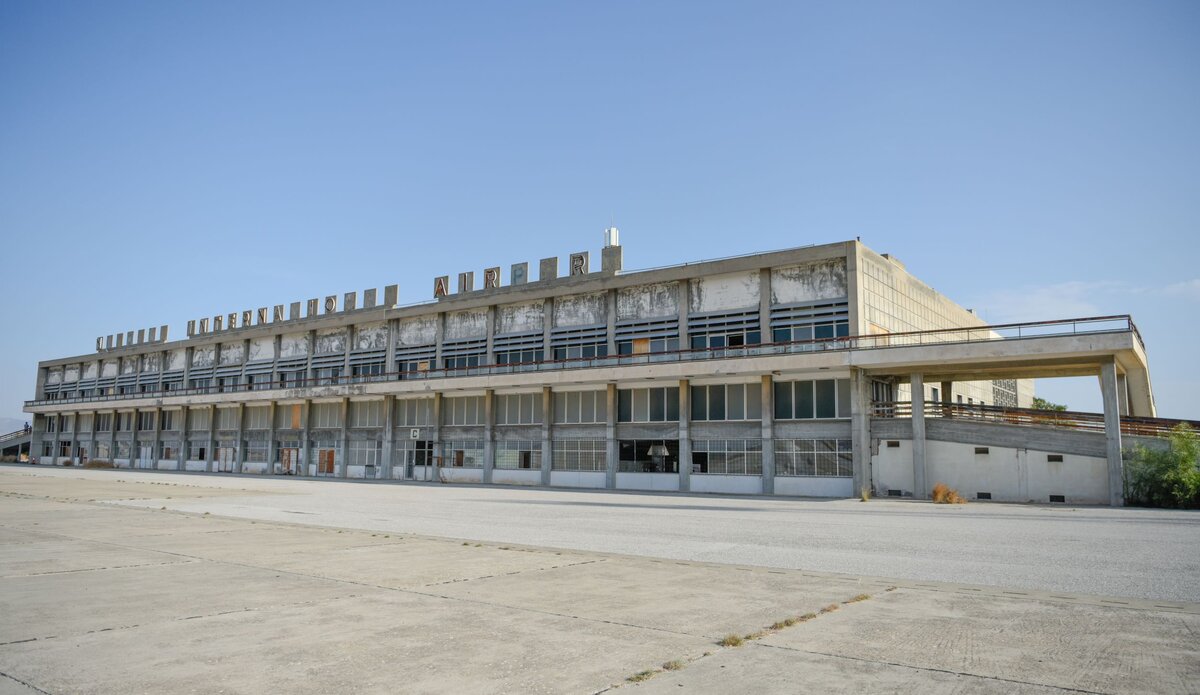
Within the buffer zone on the western edge of Nicosia, the hangars and runways of the Nicosia International Airport remain much as they were on 16 August 1974 – frozen in time
The airport began service as Royal Air Force Station, Nicosia, and saw heavy use during the Second World War. It opened as a commercial airport two years after the end of the War, in 1947, but the area surrounding the airport itself remained the location for the Air Station. After Cyprus gained independence in 1960, the airport and its surrounding area were transferred to the Cyprus Government. The airport itself, including the tower, was staffed and run by Greek Cypriots, and was the island’s only international airport.
The RAF continued to occupy part of the site, known as the RAF Nicosia Retained Site: this British “retained site” status gave the United Kingdom the right to exercise exclusive control over the designated area in an emergency. In addition, three former RAF camps close to the airport shared facilities with UNFICYP after the Force’s establishment in March 1964.The airport facilities were expanded with a new terminal building in 1968. The runways served both military and civilian aircraft, and by July 1974, Nicosia International Airport was welcoming a strong tourism trade.On 15 July 1974, Greek National Guard officers staged a military coup d’état. For the next four days, the airport was kept busy with commercial flights arriving to evacuate civilians which were primarily tourists.
On 20 July, Turkish forces, responding to the Greek coup, launched a series of air raids on the airport. On 23 July, fighting between Turkish and Greek forces was especially fierce in the airport vicinity. The Force Commander at that time, General Prem Chand from India, ordered UNFICYP to take over the airport, declaring it a United Nations Protected Area. United Nations Headquarters in New York gave its immediate approval, and, with the agreement of the local military commanders of both sides, UNFICYP troops (from Canada, Ireland, Finland, Sweden and the United Kingdom) occupied the airport under the following conditions:
The UNPA included the whole of the airport complex, including the premises of RAF Nicosia and the UN camps.
Neither side was to approach within 500 metres of this perimeter. When ceasefire lines were drawn on 16 August 1974, the area declared as a United Nations Protected Area (UNPA) was included within the buffer zone.
In keeping with UNFICYP’s mandate to maintain the status quo, the airport has remained a United Nations Protected Area since 1974.
Time and weather have led to some structural deterioration to the terminal building and to the Cyprus Airways Trident Sunjet passenger plane resting beside it: the plane’s engines were stripped during the crisis in 1974, and used to repair another Cyprus Airways airplane to enable the latter plane to fly out. Extensive efforts were made during 1993 and 1994 to reach an agreement on a series of confidence-building measures aimed at spurring a return to normal conditions on the island. A key element in the action was an attempt to reopen Nicosia International Airport for the equal benefit of both communities.
By mid-1994, however, agreement on the measures remained beyond reach, and despite further talks between both communities, the airport remains closed.


Nicosia International Airport
Why the capital city of cyprus does not have an airport.
The article written by Anna Maria Jones “1500 tourists left Cyprus scared one day before the Turkish invasion” , which mentions the airport of Nicosia, made me think about what happened to this airport and why it does not work nowadays. I managed to find out a few facts that I decided to share with you, dear readers of CyprusAlive. The Nicosia airport began its existence in the 1930s as an airbase of the Royal Air Force of Great Britain. Then gradually the airport began to be used for civil transport. The first building of the air terminal was built In 1949, which was later modernized several times. However, a beautiful new building was built in 1968, and the old one was given to the air club.
The new terminal building of the International Airport of Nicosia
Nicosia International Airport was supposed to be the main airport of the island, which, in my opinion, sounds very logical, because Nicosia is the capital of Cyprus. Therefore, in 1974 the airport was planned to expand. However, the plans were not destined to come true. In 1974, there was an illegal Turkish invasion of Cyprus , and the airport of Nicosia directly appeared in the United Nations buffer zone , which separates the occupied part of the island from the territory of free Cyprus. In addition, during the invasion, the airport was bombed. Thus, after these tragic events, the International Airport of Nicosia essentially ceased to exist. The last passenger aircraft from this airport flew in 1977 with the permission of the United Nations. Currently, the airport is the base for United Nations Peacekeeping Force in Cyprus .
The terminal building of the International Airport of Nicosia (2012)
Let's hope once the Cyprus issue is solved, and the Nicosia International Airport will again function. Nicosia International Airport - MAP Photos from: VARLAMOV.RU / zyalt.livejournal.com
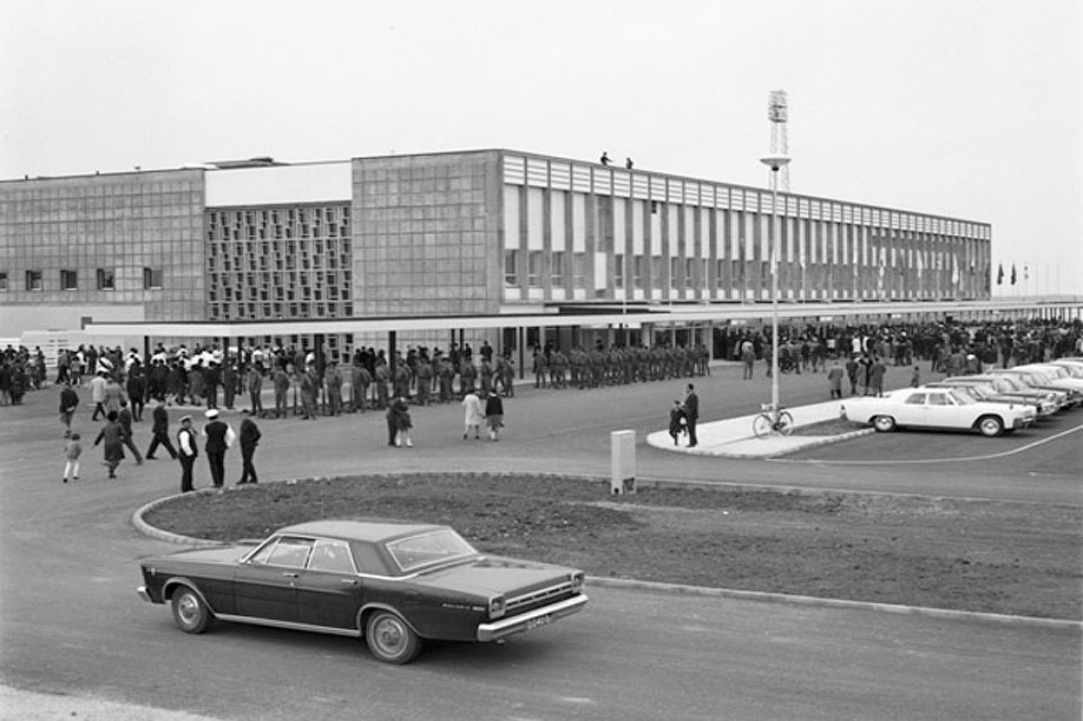
Find out also whether there is a railway in Cyprus
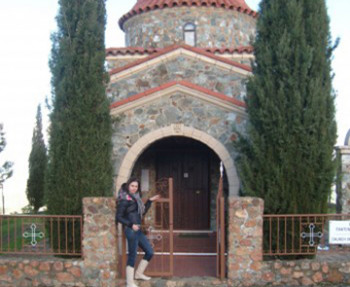
Latest (83) articles about HISTORY
3 beautiful locations in cyprus for an unforgettable weekend, discover picturesque villages and stunning landsca..., exploring cyprus, 10+1 villages worth visiting, cypriot christmas customs, for the elderly to remember and the youngest to le..., the myth behind the word lycanthropy, the first werewolf, ancient kition, as we call larnaca, a name, a story, release chain of 70,000 women from all over cyprus, september 1993 - women's faith and determination.

The 15 best things to do in Nicosia: from Venetian walls to Turkish baths

Jan 4, 2022 • 8 min read
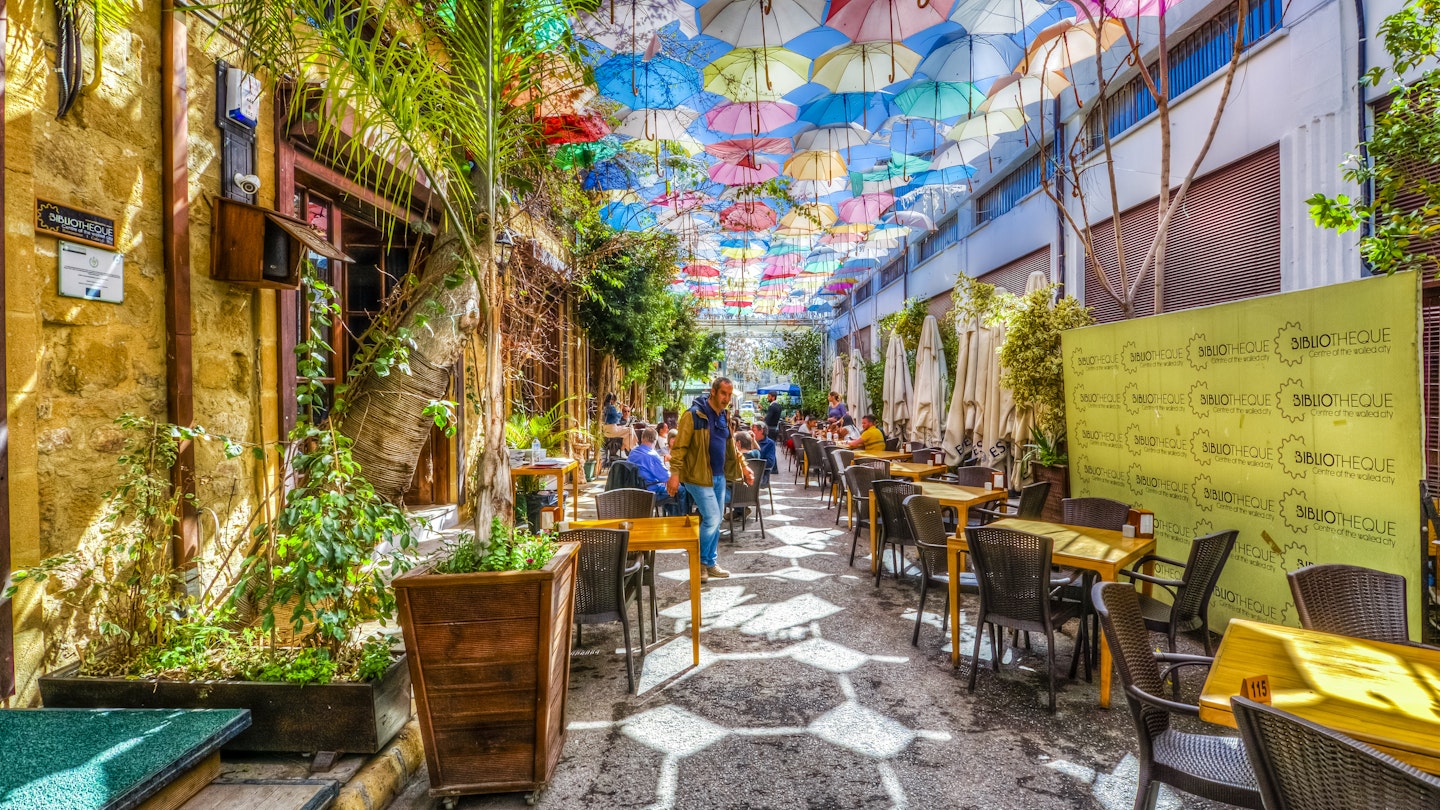
The beautiful streets of Nicosia are a delight to wander through © Nejdet Duzen / Shutterstock
While not large – everything is walkable – Cyprus's capital city of Nicosia (Lefkosia) has loads to do. You can explore its centuries of history, from Venetian, Byzantine and Ottoman landmarks to residential districts enjoying a rebirth.
Along the way, stop for a traditional coffee and consider a bath in a centuries-old bathhouse. Or you can take in the city’s newly redesigned main square, which is the work of a world-famous architect. Plus, there’s North Nicosia (Lefkoşa) never far away across the dividing Green Line.
Stroll Nicosia’s stunning new square, Plateia Eleftherias
After 16 years, in December 2021 Nicosia unveiled its reimagined central square, Plateia Eleftherias . The architect is the late Zaha Hadid , who was renowned for adding sinuous shapes and beguiling curves to major projects across the globe, including Beijing’s new airport and a stadium for the 2022 World Cup in Qatar.
The project was mired in delays and economic woes from the start, and it attracted its fair share of opposition. But there’s nothing like completion to get everybody on board, and the results are arresting, with Hadid’s flowing arcs making a dramatic statement below the old walls. Hundreds of native trees provide shade for pedestrian avenues and a series of small gardens.
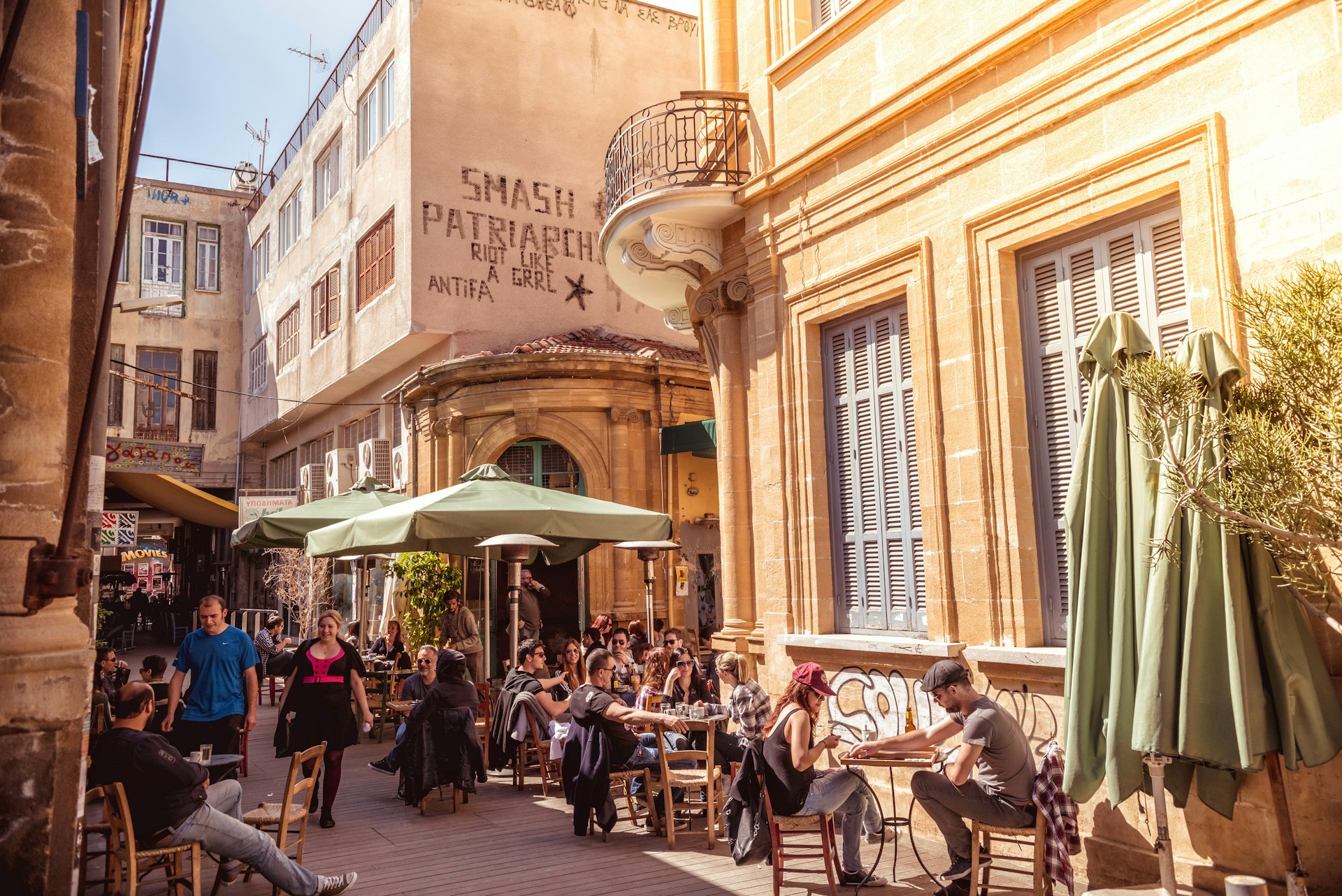
Follow the Green Line
The 300km (186 mile) Green Line is the UN-administered buffer zone and barricades that have divided the two parts of Cyprus – Nicosia and North Nicosia – since 1974. It runs right through the heart of Nicosia, and following its zigzagging route makes for a fascinating walk.
Start your walk on the eastern side of the Old City at the northern end of Leoforos Athinas, where a metal gate and UN bunker signal the end of the road. Turn left into Antasias Toufexi, rimmed by terraced cottages, some restored and others with their adobe-brick innards exposed, and then right onto Axotheas, which ends abruptly with another cement-bunker barricade. From here stay close to the wall as you trace along streets, alleys and squares in a generally southwest direction. Look at how residents have coped with five decades of division, whether by planting flowers on barricades or protecting windows with sandbags.
On Ledra Street, walk to the crossing checkpoint, and take the first left turn down the Stoa Tarsi arcade. Keep heading west, onto Artimidos with another bunker, and then zigzag to Pafou, where the Roman Catholic Holy Cross Church sits beside the barricaded-off stub of the street with the Roccas Bastion right behind.
See both sides of Nicosia from Shacolas Tower Observatory
Shacolas Tower Observatory provides a sweeping 11th-floor view across Nicosia and the mountain range beyond. Placards in English below the windows call out specific buildings and neighborhoods, and trace the course of the Green Line as it bisects the city.
Be dazzled at the Church of Archangelos Michail
The domed Church of Archangelos Michail dates to 1695 and is thought to have replaced an earlier Gothic church on the same site. Its interior is a constellation of glitter from hundreds of gold icons, some dating to the 1400s, and its exterior is built in Franco-Byzantine style, which is a pastiche of Gothic elements from France and Byzantine details traditionally used by the Greek Orthodox Church. You can see influences from two different rulers: the Lusignans of France, who were active in Cyprus from the 12th through 15th centuries, and the Venetians, who ran the show starting in the 16th century.
Get reverent at Omeriye Mosque
The Omeriye Mosque dates from the 14th century, when its site was occupied by the Augustinian Church of St Mary, and its tall minarets date to the opening of the current structure in 1571. Popular lore says this was the first place used by Turks for worship after their invasion the same year. It’s a working mosque that serves Nicosia’s diverse Arab and Asian Muslim populations. Non-Muslims may visit outside of prayer times, as long as they observe the clothing etiquette and remove their shoes.
See all that glitters at the hidden Agios Ioannis Church
After the Ottomans took over in the 16th century, Christians kept low profiles in Nicosia. But they didn’t go completely underground, as you’ll see at the modestly sized Agios Ioannis Church , which dates to the 17th century. Located in the courtyard of the Archbishop Makarios III Cultural Foundation , the church’s discrete exterior masks an opulent interior featuring elaborate 18th-century frescos. Added sparkle is provided by gold-covered carvings and hanging crystals.
Smell the flowers in the beguiling Chrysaliniotissa Quarter
Hard up against the Green Line dividing the city, the Chrysaliniotissa Quarter is a gentrified residential neighborhood on the edge of the Old City. Decades of neglect had the unintended consequence of preserving its elegant early-20th-century homes from redevelopment. Today the area’s charms are fully appreciated and a wave of renovations have returned the facades to their lost glory.
Residents create tiny, lush gardens with little more than a few potted plants. The narrow lanes provide a restful escape from the busier byways of the Old City. Stop into the Chrysaliniotissa Crafts Centre , where you’ll find artisans creating traditional Cypriot craft objects in eight workshops surrounding a central courtyard.
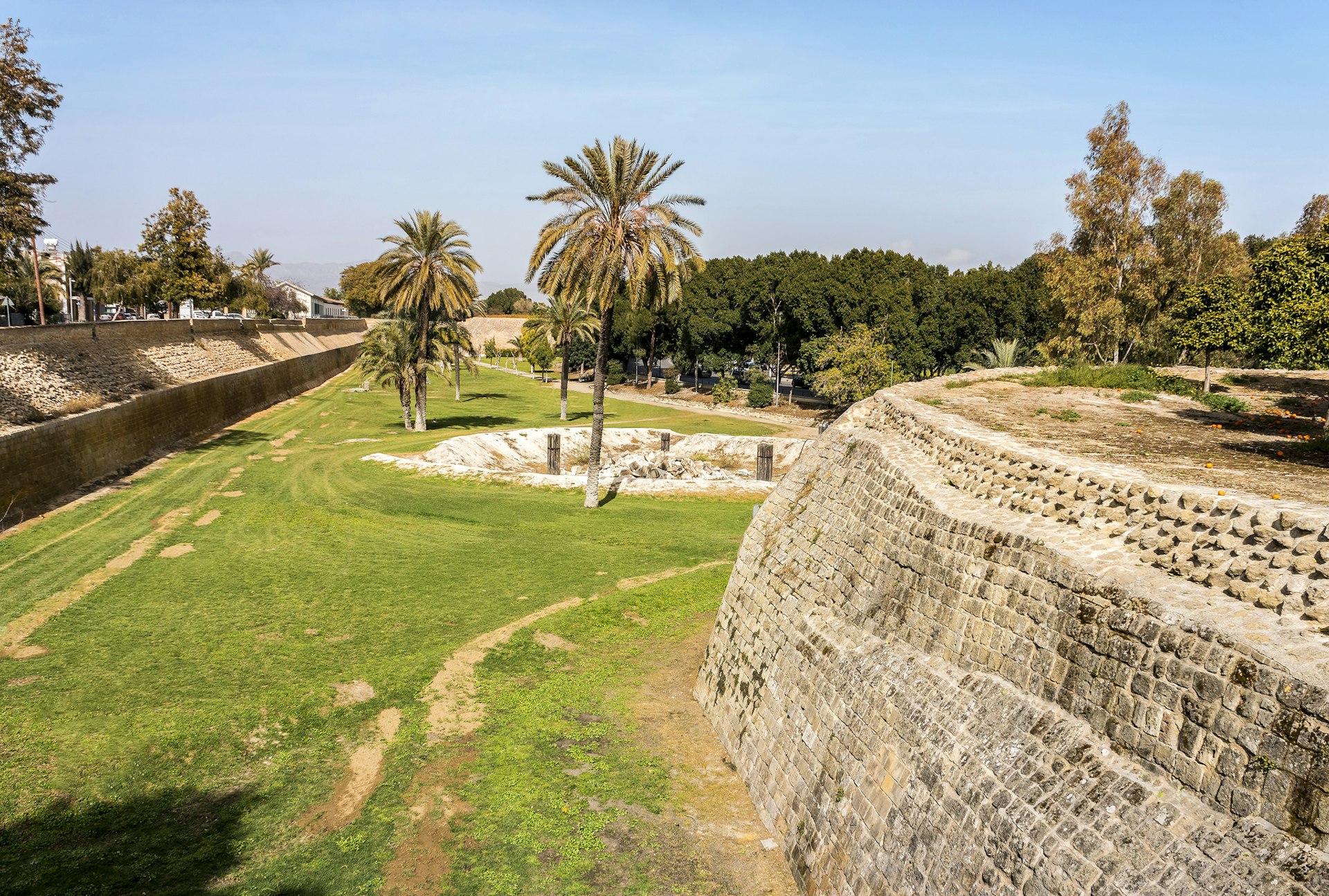
Walk the 16th-century Venetian walls
The Venetian walls surrounding the Old City are so unusual that, once seen on a map or aerial photo, you’ll never forget their idiosyncratic snowflake-like shape. Strolling these fortifications and their adjoining moats is one of Nicosia’s highlights.
Dating from 1567, the walls were erected by the Venetian rulers to defend against Ottoman invaders. Unfortunately, it didn’t work out: In 1570, the Ottomans landed in Larnaka and stormed the fortifications, killing over 50,000 inhabitants. But the walls have remained in place ever since. Of the 11 bastions, five in Nicosia have been carefully restored, while another forms part of the dividing Green Line. The other five are in North Nicosia (Lefkoşa), where they slowly crumble ahead of some future restoration.
Take a selfie under Famagusta Gate
Nicosia’s most photographed feature is Famagusta Gate on the city’s east side. Dating to the Venetian era of the 16th century, it’s the best-preserved of the three original gates that once led into the Old City, with a timeless wooden door and a sloping facade that open into a tunnel leading through the rampart wall. Beyond the tunnel on the right is a small open-air arena, where summertime concerts are held.
Get clean in 16th-century Hamam Omerye bathhouse
The ancient Romans were the inspiration for the Ottomans who popularized hammams: traditional bathhouses featuring a series of rooms where you can use hot and cold water plus steam for your ablutions. The 16th-century Hamam Omerye has been lavishly restored to its centuries-old glory, and the luxurious facilities are open to the public. Indulge in a range of hot and cold baths, massages, body scrubs and treatments.
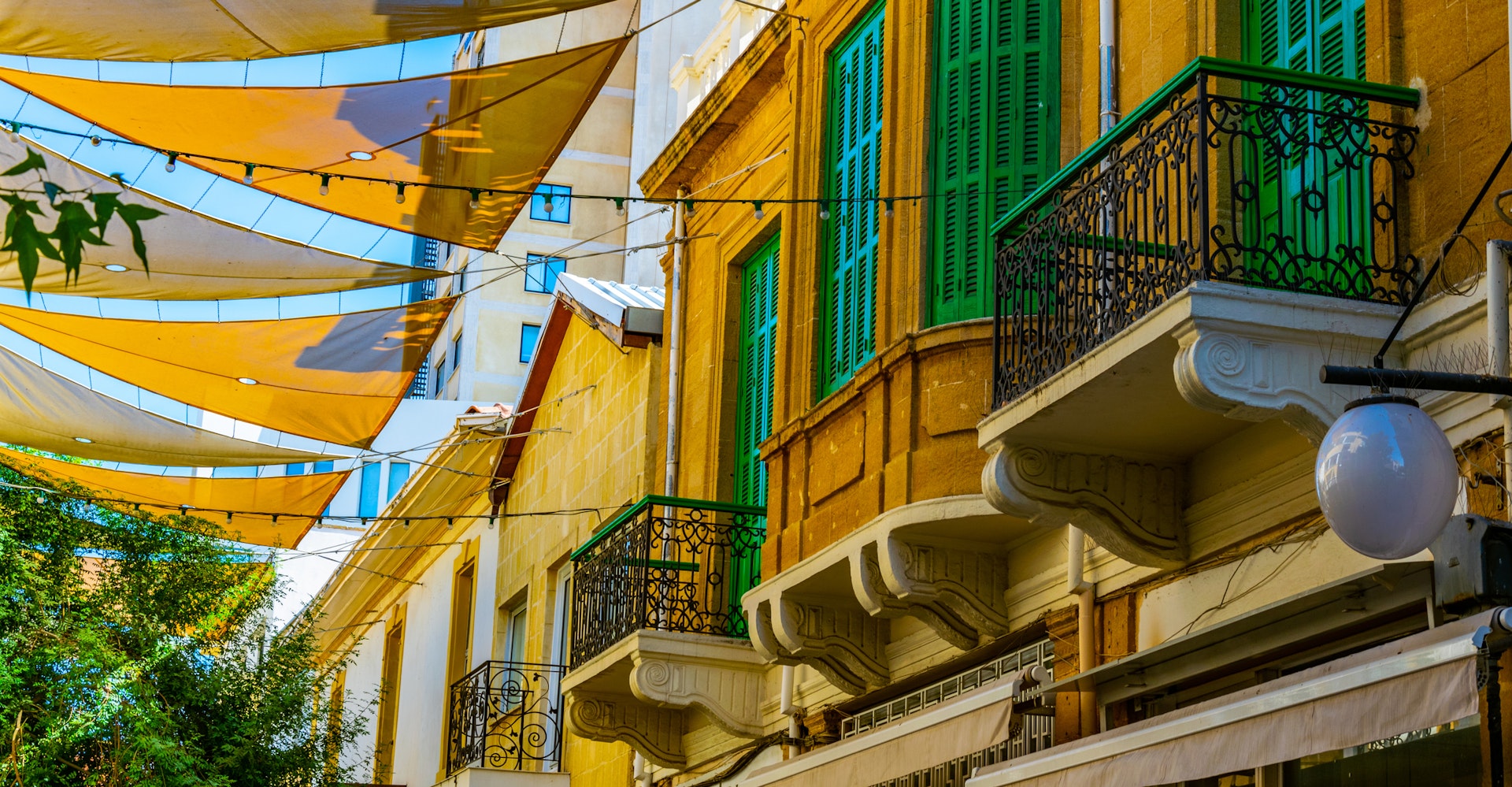
Ponder the charms of Laïki Yitonia
Appropriately translating to “popular neighborhood,” Laïki Yitonia is the only overtly touristy neighborhood in the Old City. It manages to transcend the legions of touts trying to lure you into restaurants with mediocre food, and its narrow lanes drip with vintage charm. It’s a worthy quick detour during your explorations of the Old City’s southern precincts.
Escape the heat in the Municipal Swimming Pool
There’s no need to trek to the coast on a stinking-hot summer’s day, nor do you need to con the family into believing that a cool museum will suffice – not when you can take the plunge at the well-maintained Municipal Swimming Pool . Located in the northwest corner of the city, it has lifeguards and is surrounded by big shady palms and well-tended public gardens.
Find the best time for your next Cyprus vacation with our seasonal guide
Relive the Middle Ages at the Medieval Nicosia Festival
During the five-day-long Medieval Nicosia Festival in April, the city hosts a bundle of events that celebrate its medieval past. Enjoy free guided tours, concerts, lectures and special exhibitions, all with medieval themes. Highlights include hands-on crafts demonstrations aimed at adults and kids.
Savor a traditional coffee at Haratsi
The appeal of Haratsi , a traditional coffee shop dating from the 1930s, is that little has ever changed. Here, deep in Old City near the Green Line, there’s no New Agey background music and no minimalist decor. Rather, this is where you adjust your well-worn wooden chair until it sits at least sort of level and, if it’s morning, consider a traditional breakfast of olives, grilled or fresh halloumi, bread, tomatoes and, of course, coffee. At any time of day, you can savor a Greek coffee served sketo (in Greek), which is without sugar and very bitter and strong.
Shop for exquisite art at Diachroniki Gallery
Join art collectors who come from around the globe to peruse the artwork at this unmissable gallery. Diachroniki Gallery brings together the work of top Cypriot artists as well as artists inspired by the island. Exhibitions feature everything from paintings, sculpture and etchings to antique maps and prints.
Safety recommendations and restrictions during a pandemic can change rapidly. Lonely Planet recommends that travelers always check with local authorities for up-to-date guidance before traveling during Covid-19 .
You might also like: The 9 best museums and churches in Nicosia See a different side to Cyprus on these stunning hikes The best things to do in Cyprus: sun, sand and ancient civilizations
Explore related stories
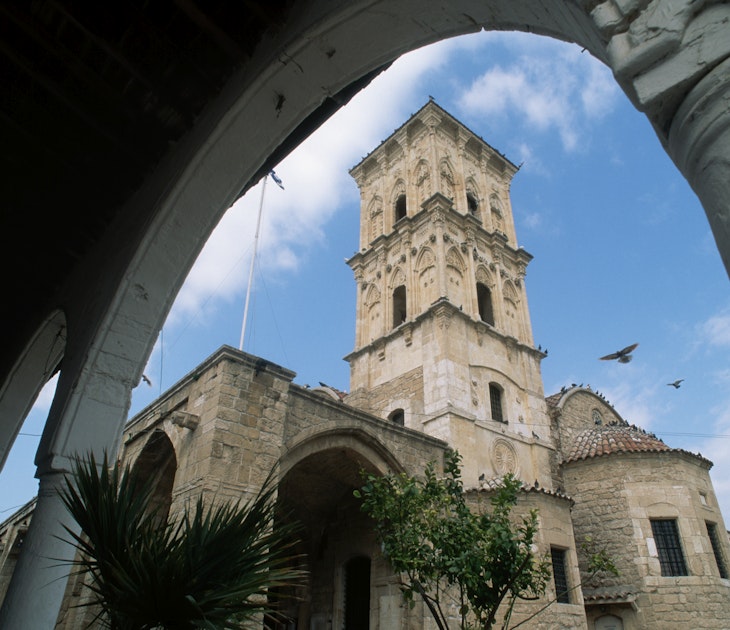
Jan 13, 2022 • 8 min read
Explore mosques, caves and more within two hours of Cyprus' capital city.
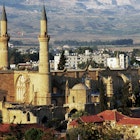
Apr 21, 2015 • 5 min read
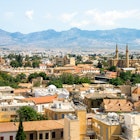
Jan 8, 2022 • 7 min read
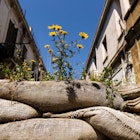
Jan 7, 2022 • 7 min read

Nov 17, 2021 • 6 min read
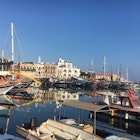
Jul 13, 2018 • 5 min read
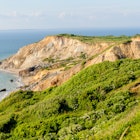
May 9, 2024 • 9 min read
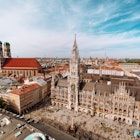
May 8, 2024 • 6 min read
Simple Flying
Which airports serve the island of cyprus.
There are various ways to get to the Mediterranean island.
Located off the south coast of Turkey in the eastern extremity of the Mediterranean Sea, the island of Cyprus is a popular destination among holidaymakers from Europe and further afield. It has three main international airports, with the operations at one of these facilities bound by a complex political situation. There is also a fourth facility that is now disused, with the three operational ones being:
- Larnaca Glafcos Clerides International Airport (LCA)
- Paphos International Airport (PFO)
- Ercan International Airport (ECN)
Larnaca replaced Nicosia International Airport
Located in the southeast of the Mediterranean island nation, Cyprus Inform notes that Larnaca International is the country's largest and busiest airport. Before the industry-wide downturn caused by the onset of coronavirus, it was serving more than eight million passengers a year, with most of the traffic serving the facility being of a seasonal nature. This reflects Cyprus' status as a holiday hotspot.
Larnaca International opened in February 1975 and replaced Nicosia International (NIC) as Cyprus's primary international air hub. Nicosia had ceased functioning as a commercial airport due to the Turkish invasion of the island the previous year. It was left derelict after that, resulting in scenes such as the ones pictured below. Today, it reportedly serves as a UN base but no longer handles flights.
Want answers to more key questions in aviation? Check out the rest of our guides here !
Despite, as Trellows notes, initially having a landing strip too short to serve jet aircraft, Larnaca's runway 04/22 now stretches for 3,000 meters (9,823 feet). This allows it to handle intercontinental traffic, such as, as reported by the New York Times , Gulf Air 's former twice-weekly non-stop flights to New York John F Kennedy International Airport (JFK). Last year, eight million passengers used the airport.
Bouncing back
This saw the facility come closer to reaching its pre-coronavirus peak of 8.23 million, which it achieved in 2019. In 2024, scheduling data made available by Cirium , an aviation analytics company, shows that just over 9.6 million seats are scheduled on flights to and from Larnaca International Airport. This capacity is spread across some 51,618 flights, offering 11,251,264,442 available seat miles.
Why British Airways Is Relaunching Tel Aviv Flights With A Stop In Cyprus
Therefore, flights serving Larnaca would need to have an average load factor of around 86% for the airport to exceed its record annual passenger total. Wizz Air has the most significant presence at the facility, with 8,834 flights, 1,770,077 seats, and 2,019,967,207 ASMs scheduled this year, followed by Greek flag carrier Aegean Airlines, which has 5,656 flights, 1,079,640 seats, and 643,414,488 ASMs.
Paphos International Airport
Paphos International (PFO) is Cyprus's second-largest airport and is ideally situated for tourists visiting the west of the sun-kissed Mediterranean island. It recently turned 40 years old, having initially opened back in 1982. Unlike Larnaca, it serves as a joint public/military airport, with Cyprus's National Guard and Air Force also present. Furthermore, unlike Larnaca, it doesn't typically handle cargo flights.
Pre-pandemic traffic peaked in 2019 when just over three million passengers used the airport, whose asphalt concrete-paved runway 11/29 stretches for a distance of some 2,699 meters (8,855 feet). Due to the tourism-driven nature of flights to Paphos (and indeed Cyprus as a whole), many of these passengers typically arrive and depart on flights that only operate seasonally and/or on a chartered basis.
That being said, certain routes are served all year round, with the UK being a key market in this regard thanks to low-cost carriers such as easyJet and Jet2, as well as flag carrier British Airways. Meanwhile, Ryanair has a considerable year-round presence at Paphos, having opened a base there in 2012. As well as serving a host of European destinations, the airline also flies to the Middle East from Paphos.
Since the pandemic, Paphos has broken its annual passenger record in consecutive years, handling 3.18 million guests in 2022 and 3.56 million in 2023. This year, data from Cirium shows that 4.26 million seats are scheduled on flights to and from the facility, with these being spread across 22,204 flights and offering 6,590,943,140 ASMs. Ryanair accounts for more than half of the traffic by flights and seats.
Ercan International Airport
The third and final active commercial airport on the island of Cyprus is Ercan International (ECN). As Simple Flying explored in more depth in an article published earlier this year, this facility's operations are restricted due to its location in the contested territory of Northern Cyprus. This includes the fact that only Turkish aircraft can fly there, as Turkey is the currently only country to formally recognize it.
Ercan International: The Airport Only Open To Flights From Turkey
Military airfields.
It is also worth noting that the island of Cyprus is home to several military airfields, such as RAF Akrotiri, which has been in use since it opened in 1955. According to the RAF , it houses two groups today: the No. 84 Squadron and the No. 903 Expeditionary Air Wing. Its runway is 2,745 meters (9,006 feet) long.
What do you make of the airports that serve the island of Cyprus? How many have you flown to or from in the past? Let us know your thoughts and experiences in the comments!
Europe Tutor
Cyprus Airports [Everything You Need to Know]
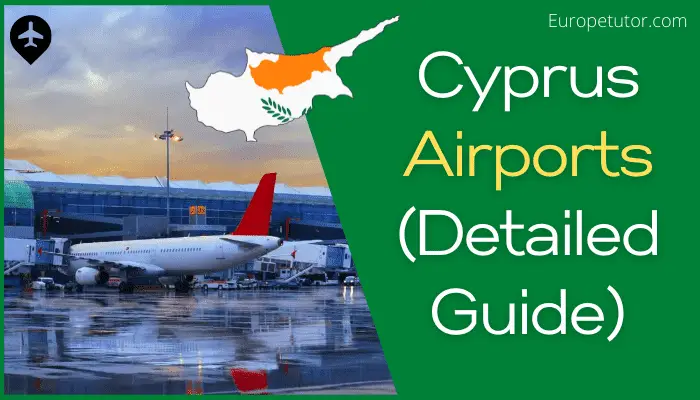
This post was most recently updated on January 6th, 2023
Cyprus has a total of 9 airports, out of which 3 are available for the Public, 5 are available for the Military, and 1 is available for both public and military purposes. Larnaca airport and Paphos airport are the only two international airports in Cyprus available for international travel.
Today in this article, we are going to learn about the airports in Cyprus in detail. Keep reading till the end.
Larnaca International Airport and Paphos International Airport are operated and managed by Hermes Airports Ltd . Hermes Airports undertook the operation in May 2006, under a 25-year BOT (Build-Operate-Transfer) concession agreement with the Republic of Cyprus.
Larnaca International Airport
Larnaca Airport is an international airport located 4 km southwest of Larnaca, Cyprus. (IATA code – LCA) is the main airport of Cyprus, receiving the majority of international traffic.
Larnaca airport is also known as Glafcos Clerides, which was named in honor of the former President of Cyprus (1993 – 2003) Glafcos Clerides. You can reach the airport by car, taxi or public transportation. There is also an airport shuttle bus for you to carry to various places in Cyprus from/to Larnaca International Airport.
Larnaca International Airport was opened on 8 February 1975, with only limited infrastructure facilities and a prefabricated set of buildings comprising separate halls for departures and arrivals as it was hastily developed towards the end of 1974 after the invasion of Cyprus by Turkey.
The airport has one primary state-of-the-art passenger terminal. Departures are accommodated on the upper level, while arrivals are at the ground level. The old terminal serves as a “VIP terminal”, which is used for visiting heads of state, some private aviation, and for cargo.
Larnaca International Airport has around 50 airlines that operate regular, scheduled, and charter flights to and from Larnaca. LIA has accommodated 3,592,011 people in 2021 . You can look at the statistics table below to see the number of people who traveled in the last 15 years.
Here are some of the facilities you can get at Larnaca International Airport:
- Medical centers
- Public Transportation
- Car rentals
- Restaurants & Cafes
- Animal Transportation
- Duty-free stores
- Porter Services
- Currency exchange
- Tax-free terminal
- High-speed Wi-Fi
- Souvenir shops
- Luggage wrapping & storage
- Express lane & spa
Here are the contact details for Larnaca International Airport .
P.O. Box 43027 P.C. 6650, Larnaka, Cyprus
Tel: 77778833 (local calls only), +357 25 123022 (int. calls only) Fax +357 24 008117
Email: [email protected] | [email protected]
Paphos International Airport
Paphos International Airport is a joint civil-military public airport located 6.5 km (4.0 mi) southeast of the city of Paphos, Cyprus. It is the country’s second-largest airport, after Larnaca International Airport.
Hermes Airports Limited took over the construction, development, and operation of Paphos International Airport for a period of 25 years in May 2006.
Paphos Airport (IATA code – PFO) annually receives most of the summer charter flights to southern Cyprus. It is commonly used by tourists for vacation.
Travelers have many transportation options for getting to Paphos Airport or traveling directly from the airport to any city in Cyprus. There is a regular bus service from Paphos Harbour station to the airport, limited services also run to/from Paphos Town (Karavella) and Polis. Direct buses to/from Limassol, Nicosia, and Larnaca are also available.
Here are some of the facilities you can get at Paphos International Airport:
- Restaurants
- Baby-Parent Rooms
- Disabled access facilities
- Refrigerated storage for cargo
Along with these, passenger facilities include 28 check-in desks, 1 special baggage check-in, 7 gates, and 22 aircraft stands.
Paphos International Airport has around 17 airlines that operate regular, scheduled, and charter flights to and from Larnaca. PIA has accommodated 632,990 people in 2020 . You can look at the statistics table below to see the number of people who traveled in the last 15 years from Paphos International Airport.
Here are the contact details for Paphos International Airport .
P.O. Box 62320 P.C. 8063, Pafos, Cyprus
Tel: 77778833 (local calls only), +357 25123022 (int. calls only) Fax +357 26 007100
Email: [email protected] | [email protected]
Nicosia International Airport
Nicosia International Airport is an airport located 8.2 km (5.1 mi) west of the Cypriot capital city of Nicosia in the Lakatamia suburb. It is unused as of now. It was originally the main airport for the island, but commercial activity ceased following the Turkish invasion of Cyprus in 1974, then the Larnaca Airport become the largest international airport.
This airport was initially constructed in 1930, and it acted principally as a military airport and is still owned by the British Ministry of Defence.
The airport site is now mainly used as the headquarters of the United Nations Peacekeeping Force in Cyprus. There have been some plans for Nicosia Airport to be reopened under United Nations (UN) control as a goodwill measure, but so far neither the Greek Cypriots nor the Turkish Cypriots have seriously pursued the option.
The last commercial airline flights out of Nicosia Airport took place in 1977 under UN Special Authorisation. Following the Turkish invasion, the airport was the scene of some of the heaviest fighting between Cypriot and Turkish forces.
In 2013, Michael Paraskos of the Cornaro Institute in Cyprus argued that the old Nicosia Airport would no longer be needed in the event of a political settlement on the island, due to there being three other functioning airports in Cyprus. It was suggested it should be turned into a tax-free industrial zone, designed to attract foreign high-tech firms, and employ Cypriots from both the Greek and Turkish communities on the island.
Can you visit the Nicosia International Airport?
Yes, you can visit the Nicosia International Airport, but you need to take permission from the United Nations Peacekeeping Force in Cyprus. Without their permission, no one can visit the airport.
Ercan International Airport
Ercan International Airport is located in the Turkish Republic of Northern Cyprus. It is located about 13 kilometers (8.1 mi) east of Nicosia, near the village of Tymbou.
It was constructed by the British in World War II as a military airport, during their colonial rule of the island. Following the Turkish Cyprus and the partition of the island it was, and today it is used as the main civilian airport of Northern Cyprus.
Ercan Airport currently has a 2.75-kilometer-long runway and an apron with a capacity of seven aircraft. Although the runway is long enough for large planes to land, it is not long enough for take-offs.
Flights to the airport are banned internationally due to the ongoing Cyprus dispute. People with Republic of Cyprus passports prefer to travel from Larnaca International Airport whereas Turkish citizens can’t do that. The Government of the Republic of Cyprus considers the use of Ercan Airport to exit or enter the island illegal.
You can look at the statistics table below to see the number of people who traveled in the last 20 years from Ercan International Airport.
Ercan Airport is served by four carriers with booked and contracted flights to Ercan. Aircrafts that work normally booked flights to Ercan are Turkish Airlines, Pegasus Airlines, AtlasGlobal, and Anadolujet Airlines.
Here are some of the facilities you can get at Ercan International Airport:
- Taxi Transfers
- Pick-up and Drop-off
- Restaurants and Cafes
- Currency Exchange
- Health Service
- Security at Airport
Lakatamia Air Base
Lakatamia Air Base is located in Lakatamia, Cyprus. It was built by the British and was handed over to Cyprus upon independence.
Under Cyprus control, the airfield was more or less abandoned, as the Cypriot armed forces operated from Nicosia. The invasion of Cyprus by Turkey changed that. Because the Cyprus defense forces could no longer use Nicosia they reactivated Lakatamia.
It mainly served as a helicopter airfield but was still capable of receiving (small) fixed-wing aircraft until the spring of 2013. Then at some point after April 2013, the remaining runway was almost completely dug up and removed.
Geçitkale Air Base
Geçitkale Air Base is also known as Lefkoniko Airport. It is located in Lefkoniko in Northern Cyprus. It is a military airfield of the Turkish Air Force.
The construction of Geçitkale Air Base was completed around 1990. The unofficial ICAO code of Geçitkale Air Base is LCGK.
Geçitkale Air Base was assigned by a decision of the government of Northern Cyprus to the Cyprus Turkish Peace Force Command for use by unmanned aerial vehicle (UAV) operations.
Geçitkale’s only runway, 9/27, measures 2,850 m (9,350 ft) in length and 45 m (148 ft) wide. In addition, there is a 285 m (935 ft) long stop way on either end. The airport is equipped with a VOR/DME and an NDB station.
İlker Karter Air Base
İlker Karter Air Base is located in Kyrenia in the Turkish Republic of Northern Cyprus. It is a military-based airfield.
The airfield serves as the Headquarters of the Turkish Army (XI Corps, two divisions) in Cyprus.
It bears the name of Air Pilot First Lieutenant İlker Karter, who was martyred on July 20, 1974, when he was on duty at the 8th Main Jet Base Command of the Turkish Air Force, while performing a duty flight in the Cyprus Operation.
RAF Akrotiri
RAF Akrotiri is a large Royal Air Force located in Akrotiri in the Western Sovereign Base Area. RAF Akrotiri was first constructed in 1955. RAF Akrotiri is being controlled by the British Forces Cyprus.
The ICAO Airport Code of RAF Akrotiri is LCRA.
RAF Akrotiri is home to the Cyprus Operations Support Unit which provides joint support to British Forces Cyprus and operations in the region to protect the UK’s strategic interests.
RAF Akrotiri is an extremely busy Permanent Joint Operating Base that supports ongoing operations in the region as well as support for the Sovereign Base Areas on Cyprus. It is used as a forward mounting base for overseas operations in the Middle East and for fast jet training.
RAF Akrotiri’s Griffin helicopters also play an important search and rescue function in collaboration with the Republic of Cyprus Police and National Guard Air Command.
Official Website: www.raf.mod.uk
Kingsfield Air Base
Kingfield Air Base is located in Dhekelia in the Sovereign Base Areas of Akrotiri and Dhekelia.
The ICAO Airport Code of Kingsfield Air Base is LCRE. The Sovereign Base Area is about 22 kilometers east of Larnaca. It was built for the Army Air Corps, possibly around 1960.
You may also like to read:
Wildlife in Cyprus (A Detailed Guide)
Does Amazon Deliver to Cyprus?
Leave a comment Cancel reply
Your email address will not be published. Required fields are marked *
Save my name, email, and website in this browser for the next time I comment.

- Plan a Road Trip
- Plan a Flight
- Find an Airport
- Where to Stay
- All Questions
Nicosia Airports
There are 2 major airports that we recommend for commercial flights into Nicosia. You can research nonstop direct flights into multiple airports, whether you're flying international or domestic, using connecting flights, or even landing at a smaller local executive airport in your private jet charter. Plan out your transporation to get from the airport to downtown, and look for hotels and things to do in Nicosia.
The major airports that people talk about in and around Nicosia are:
- Ercan International Airport
- Larnaca International Airport
Here are some of the airports with international flights serving Nicosia:
- Paphos International Airport
- Beirut-Rafic Hariri International Airport
Here are some of the airports with domestic flights serving Nicosia:
- Kastelorizo Island Public Airport
- Antalya Gazipaşa Airport
You can research transportation from the airport to your hotel by taxi, bus, train, or Uber. Here are some of the most popular hotels in Nicosia.
Want to research more popular hotels in Nicosia? Click the blue button below.
- Hilton Park Nicosia
- Centrum Hotel
- Allegra Hotel and GSP Sport Center
- Averof Hotel
This page is just a starting point, to really get personalized advice from Nicosia locals and experienced travelers, post a question on Trippy! You can start by browsing the questions other people have asked about Nicosia.
If you've changed your mind and decided to go somewhere else, go to the main page and explore airports in any city.

SITE SETTINGS

Oakland airport name change battle
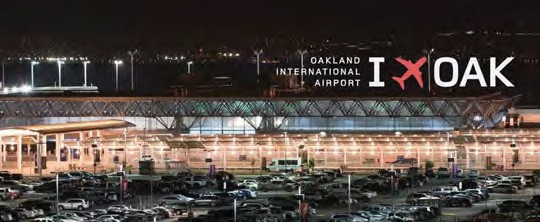
THE PORT of Oakland Board of Commissioners have unanimously voted to rename Oakland International Airport to San Francisco Bay Oakland International Airport, despite a threat of legal action by the city’s attorney, David Chiu. The board will now be left to issue final approval on May 9.
The airport’s IATA code would remain OAK if the name change goes ahead. The facility said it would work alongside “air carriers, other airports and local agencies to reflect the modification in airport and airline systems.” Officials from the Port of Oakland have said that the change is crucial in raising awareness of the facility’s location, especially for customers outside the US. A recent survey by the airport found that 30% of domestic travellers did not know how close Oakland was to other Bay Area cities such as San Francisco. They added that it would also help sustain the 30,000 direct jobs and $1.6bn economic impact on the region. However, Mr Chiu has said that the city of San Francisco would have “no choice other than to pursue necessary legal action” if the name change is approved. He, along with San Francisco International Airport director Ivar Satero and the city’s mayor London Breed, claim that the change would confuse passengers. “The problem will be particularly acute for an audience of international travellers who may not speak or read English,” Chiu added. “Those international travellers comprise an essential part of SFO’s consumer base.”
This article is from...

Other Articles in this Issue
Basket - 0 items.


COMMENTS
15. No, you cannot, it's protected by the UN and off-limits to all. The UNPA [United Nations Protected Area] included the whole of the airport complex, including the premises of RAF Nicosia and the UN camps. Neither side was to approach within 500 metres of this perimeter. When ceasefire lines were drawn on 16 August 1974, the area declared as ...
This is an area that is controlled by none of the governing forces of the island. The result is super interesting: Nicosia Airport has been left abandoned and it's pretty much in the same condition as it was in the 1970s. If you get the chance to see the airport you can experience something unique. As in stepping back into a different era.
Nicosia International Airport (Greek: Διεθνές Αεροδρόμιο Λευκωσίας, Turkish: Lefkoşa Uluslararası Havaalanı) is a largely disused airport located 8.2 km (5.1 mi) west of the Cypriot capital city of Nicosia in the Lakatamia suburb. It was originally the main airport for the island, but commercial activity ceased following the Turkish invasion of Cyprus in 1974.
For more than 40 years, the once state-of-the-art Nicosia International Airport on Cyprus has remained abandoned, a fading and painful relic of the island's turbulent ties with Greece and Turkey.
Virtual Tours. Back. Main Terminal. Avro Shackleton MR.3 XF700. Tupolev Tu-104 OK-MDE.
299. Once the central airport in the country of Cyprus, the Nicosia International Airport was abandoned after a military coup and now sits amidst the demilitarized zone between two countries ...
The Nicosia International Airport (IATA: NIC, ICAO: LCNC) was once the main airport for the island of Cyprus, and is remembered with nostalgia by people all over the island, on both sides of the buffer zone. When the new terminal building opened in 1968, German-designed by Dorsch und Gehrmann and Wiesbaden and Cypriot-built, it was hailed for ...
The Nicosia International Airport (IATA: NIC, ICAO: LCNC) began service as Royal Air Force Station, Nicosia, and saw heavy use during the Second World War. It opened as a commercial airport two years after the end of the War, in 1947, but the area surrounding the airport itself remained the location for the Air Station. After Cyprus gained ...
Visitors to Cyprus can now fly in via Larnaca, Ercan or Paphos airports - so Nicosia International would no longer be needed even in the event of a political settlement on the island. Image: 15 of 22
The weather conditions recorded for Nicosia International Airport Thursday, May 9 at 1:24 pm are: Clear sky with 9% clouds and a temperature of 28.7 ° The temperature today is expected to range between 23° and 29° Wind is blowing at a speed of 1 Bf (3 mph) from East (84°) and the pressure is 1011 hPa. Today's sunrise was at 02:47 and the ...
https://nation.africaA look inside the abandoned Nicosia International Airport in the UN-protected zone of the divided Cypriot capital, 47 years after the Tu...
Nicosia International Airport became a battleground and in 1974, the United Nations established a buffer zone dividing the island, Slate reported. The departure hall at the abandoned Nicosia ...
The lack of public access to Nicosia Airport means that international airports are now located in Paphos and Larnaca catering both for the Cypriot population and large number of tourists who visit the island annually. Ercan International Airport also serves the population on the northern part of the island but is in territory that forms part of the Turkish Republic of Northern Cyprus and as ...
The abandoned Nicosia International Airport near Nicosia, Cyprus, on March 10, 2014. For 40 years now, a buffer zone - a no-man's land controlled by the United Nations - has split Cyprus from east ...
Call us in Washington, D.C. at 1-888-407-4747 (toll-free in the United States and Canada) or 1-202-501-4444 (from all other countries) from 8:00 a.m. to 8:00 p.m., Eastern Standard Time, Monday through Friday (except U.S. federal holidays). See the State Department's travel website for the Worldwide Caution and Travel Advisories.
Nicosia International Airport ceased its commercial flights following the Turkish invasion in 1974 Stay up to date with notifications from The Independent Notifications can be managed in browser ...
The airport began service as Royal Air Force Station, Nicosia, and saw heavy use during the Second World War. It opened as a commercial airport two years after the end of the War, in 1947, but the area surrounding the airport itself remained the location for the Air Station. After Cyprus gained independence in 1960, the airport and its surrounding area were transferred to the Cyprus Government ...
The article written by Anna Maria Jones "1500 tourists left Cyprus scared one day before the Turkish invasion", which mentions the airport of Nicosia, made me think about what happened to this airport and why it does not work nowadays. I managed to find out a few facts that I decided to share with you, dear readers of CyprusAlive. The Nicosia airport began its existence in the 1930s as an ...
Stroll Nicosia's stunning new square, Plateia Eleftherias. After 16 years, in December 2021 Nicosia unveiled its reimagined central square, Plateia Eleftherias.The architect is the late Zaha Hadid, who was renowned for adding sinuous shapes and beguiling curves to major projects across the globe, including Beijing's new airport and a stadium for the 2022 World Cup in Qatar.
Paphos International (PFO) is Cyprus's second-largest airport and is ideally situated for tourists visiting the west of the sun-kissed Mediterranean island. It recently turned 40 years old, having initially opened back in 1982. Unlike Larnaca, it serves as a joint public/military airport, with Cyprus's National Guard and Air Force also present.
Yes, you can visit the Nicosia International Airport, but you need to take permission from the United Nations Peacekeeping Force in Cyprus. Without their permission, no one can visit the airport. Ercan International Airport. Ercan International Airport is located in the Turkish Republic of Northern Cyprus. It is located about 13 kilometers (8.1 ...
Compare your options: plane, train, bus, car, ferry, bike share, driving and walking directions all in one search. The nearest airport to Nicosia is Ercan (ECN). Intercity Buses operates a bus from Foinikoudes - Larnaka Marina to Dionysios Solomos Square 4 times a day. Tickets cost $4 - $5 and the journey takes 1h 10m.
Here are some of the airports with domestic flights serving Nicosia: Kastelorizo Island Public Airport (KZS / LGKJ) 362 km from Nicosia, with domestic flights. Antalya Gazipaşa Airport (GZP / LTFG) 365 km driving distance from Nicosia, with international and domestic flights from cities like Istanbul, Ankara, and Helsinki.
(Photo Oakland International Airport) THE PORT of Oakland ... Korean Airlines made its first visit to Birmingham Airport on April 8, when Boeing 777-3B5ER, HL7782 (c/n 37643), touched down from Nagoya. ... Turkey began its invasion in the north of Cyprus and Nicosia/Makarios Airport closed its doors. Almost 50 years later, time seems to have ...